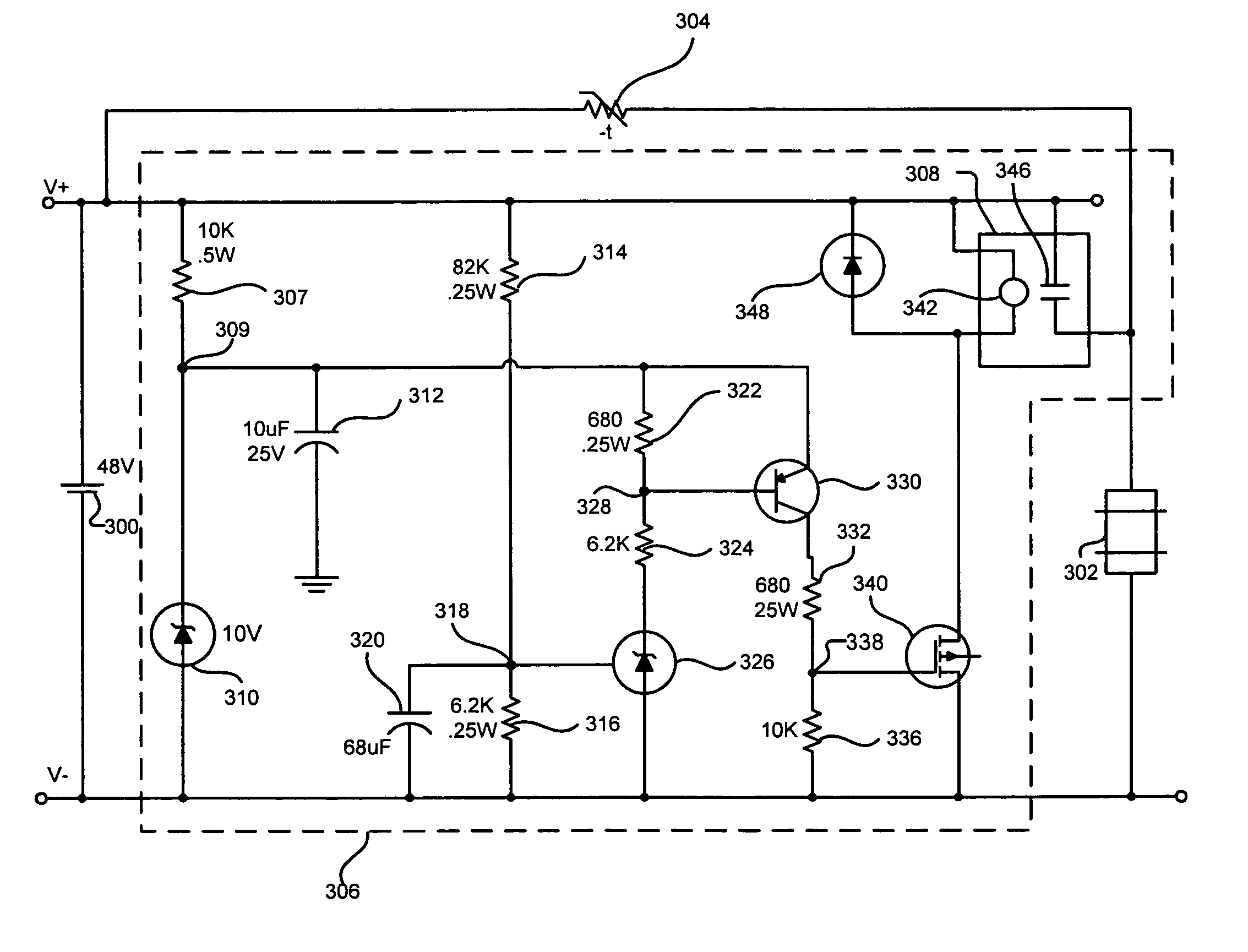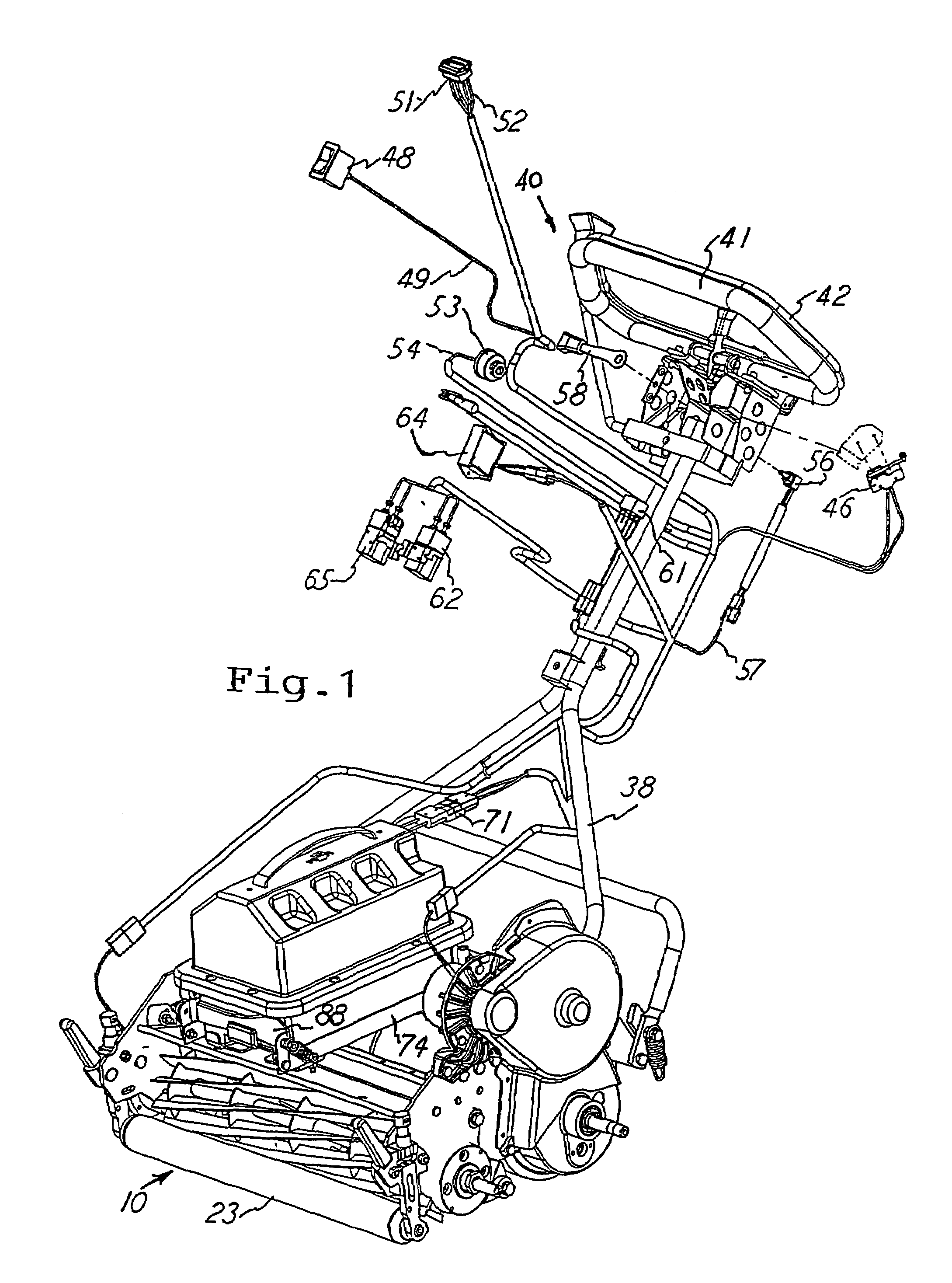Battery-powered walk-behind greensmower
a greensmower and battery technology, applied in agriculture, transportation and packaging, agriculture tools and machines, etc., can solve the problems of creating undesirable impressions and operators not being able to cut grass to a time when the battery is completely discharged
- Summary
- Abstract
- Description
- Claims
- Application Information
AI Technical Summary
Benefits of technology
Problems solved by technology
Method used
Image
Examples
Embodiment Construction
[0021]The drawings show a conventional reel-type mower 10 which includes a frame structure 11 having two side plates 12 and 13 and cross-frame pieces 14 and 16 as best seen in FIG. 2. There is a conventional rotatable greensmower reel 17 with its usual spiraled blades 18 equally spaced around the reel shaft 19 which is elongated and defines a rotation axis 21 extending along the length of the shaft 19. There is the usual reel fixed bed knife at 22, and the blades 18 orbit relative to the shaft 19 and move past the knife 22 for the usual and well-known function of the grass cutting. Also, there is a reel mower rotatable roller 23 at the front of the assembly and, along with an unshown rear roller, it supports the reel mower for movement on the ground.
[0022]FIGS. 1, 2, and 4 show the above, and they also show a traction roller 24 included in the assembly and rotatably mounted on the structure 11 through a roller axle 26. The traction roller 24 supports the lawnmower assembly on the gr...
PUM
 Login to View More
Login to View More Abstract
Description
Claims
Application Information
 Login to View More
Login to View More - R&D
- Intellectual Property
- Life Sciences
- Materials
- Tech Scout
- Unparalleled Data Quality
- Higher Quality Content
- 60% Fewer Hallucinations
Browse by: Latest US Patents, China's latest patents, Technical Efficacy Thesaurus, Application Domain, Technology Topic, Popular Technical Reports.
© 2025 PatSnap. All rights reserved.Legal|Privacy policy|Modern Slavery Act Transparency Statement|Sitemap|About US| Contact US: help@patsnap.com



